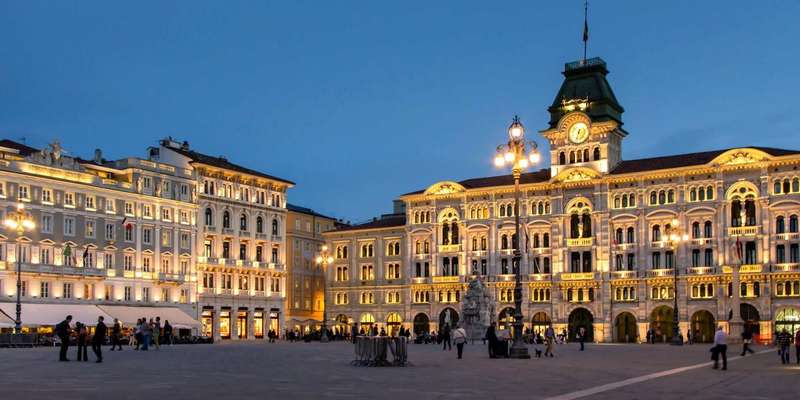- Home
- Useful Tips
- Experiencing Trieste's coffee culture
Trieste's coffee culture is a hidden gem that most visitors miss, leaving them with generic tourist experiences instead of authentic sips. Nearly 40% of travelers report feeling overwhelmed by Italy's complex coffee etiquette, while 65% unknowingly pay premium prices at crowded spots catering to outsiders. The frustration mounts when you realize you're just steps away from century-old cafes where locals enjoy better quality at half the price, but can't distinguish them from tourist traps. This disconnect robs you of what makes Trieste special – its living coffee heritage, where every cup tells a story of Habsburg-era traders and modern-day artisans. Without local insights, you'll miss the subtle differences between a 'nero' and a 'capo', or why certain standing-only counters serve the creamiest cappuccinos before noon.


Decoding Trieste's coffee menu – what to order beyond cappuccino
Trieste's coffee terminology differs from standard Italian, a legacy of its multicultural history. While Romans drink 'espresso', here you'll order a 'nero' – a stronger, shorter pull served in petite glasses. The 'capo' (local term for cappuccino) comes in a ceramic cup with precise milk foam ratios perfected over generations. Morning rituals matter: locals never order milk-based drinks after 11am, opting instead for 'goccia' (espresso with a drop of milk) in the afternoon. Seasonal variations include 'marocchino' (layered chocolate-coffee) in winter. Understanding these nuances lets you blend in at historic cafes like Caffè San Marco, where regulars appreciate when visitors respect tradition. Baristas will often upgrade your experience if you use proper terminology – expect complimentary water glasses and occasional biscotti with afternoon orders.
Finding authentic cafes – how to spot tourist traps
Genuine Trieste coffee houses reveal themselves through subtle clues. Avoid places with multi-language menus plastered outside – locals know the offerings by heart. Authentic spots often have standing-only wooden counters (called 'banconi') where regulars knock back morning espressos in three sips. Check for elderly patrons reading newspapers – a hallmark of establishments maintaining traditional preparation methods. The best cafes source beans from local roasters like Illy or Hausbrandt rather than generic suppliers. For a true test, order a 'caffè correto' (espresso 'corrected' with grappa); properly made versions use specific local distillates. Neighborhood gems like Torrefazione Cannaregio roast on-site, filling alleys with aromas that guide you better than any tourist map. Remember: in Trieste, the more unassuming the facade, the higher the likelihood you've found a generations-old family operation.
Timing your coffee crawl – when locals drink and why it matters
Trieste's coffee rhythm follows strict unwritten rules that maximize flavor and social experience. Dawn until 9am sees workers grabbing quick 'neri' at standing counters – the ideal time to observe daily rituals. Mid-morning (10-11:30) brings leisurely 'capo' drinkers to historic cafes like Caffè degli Specchi, when sunlight illuminates their gilt interiors. Post-lunch espresso (strictly without milk) happens between 3-4pm, often accompanied by flicking through newspapers. Smart visitors sync with these patterns: arrive during transitional periods (like 9:45am) to secure seats at prime people-watching tables. Summer introduces variations – locals shift to iced 'caffè in ghiaccio' in late afternoons, best enjoyed at harbor-side kiosks. Winter transforms coffee into communal experiences, with groups sharing pots of 'caffè alla veneta' (spiced with citrus and cinnamon) in cozy corners. Matching these rhythms earns you nods of approval from regulars and often better service.
Bringing Trieste home – selecting beans and brewing methods
The true test of any Trieste coffee experience is replicating it at home. Local roasts favor chocolatey Vienna-style profiles rather than fruity Neapolitan tones. Ask for 'miscele' (blends) at specialty shops like Drogheria Toso – their 80/20 Arabica-Robusta mix mimics classic Habsburg-era flavors. Traditional preparation demands a moka pot, though serious aficionados invest in manual lever machines like those at Caffè Tommaseo. Water temperature proves critical: Trieste's naturally soft water (pH 6.5-7) allows fuller flavor extraction than hard tap water elsewhere. For authentic crema, grind beans to sea salt consistency and pre-heat cups. Many cafes sell signature blends – Illy's Trieste Edition uses slower roasting for deeper caramel notes. Pair your brew with locally-made 'fave dei morti' almond cookies for a true Triestine breakfast experience, complete with the morning paper and unhurried sips.



